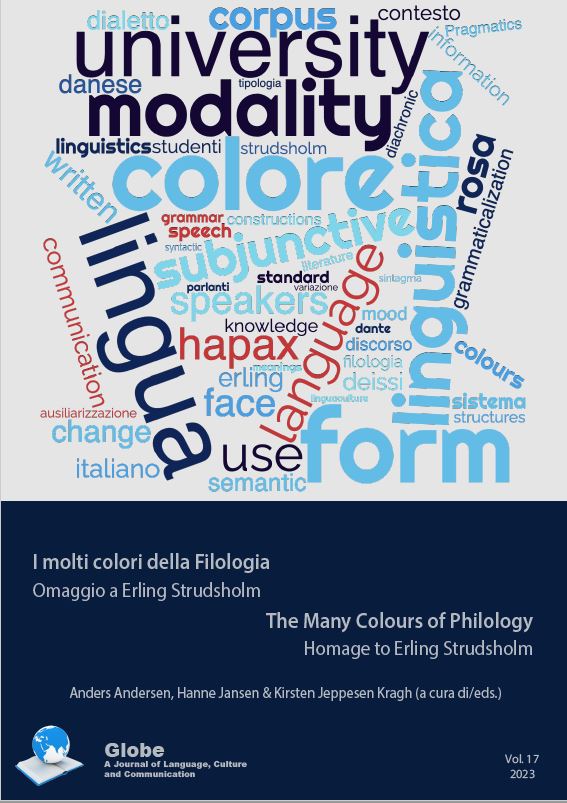Indicare, rappresentare e dislocare. La Deixis am Phantasma di Karl Bühler e i modi del Discorso Riportato
DOI:
https://doi.org/10.54337/ojs.globe.v17i.8204Abstract
‘Deixis am phantasma’ or imagination-oriented deixis is a mode of reference, originally described by Karl
Bühler, that directly brings into play one of the distinctive properties of human language, namely the unlimited
capacity to dislocate in space and time the referents and situations that are the object of discourse. Since
representing and reporting other people's speech is a discourse situation in which speakers must represent,
transpose and dislocate referents, situations, and other people's words, reported speech is a very suitable area
in which to observe this particular type of deixis. In this paper, after briefly restating the main points of Bühler's
theory of language, i.e., the two-field theory and the different modes of reference within the deictic field, I
discuss the three different types of imagination-oriented deixis (as identified by Bühler). I then try to point out
what I consider to be their systematic correlations with the two main deictic modes of reporting speech (direct
vs. indirect), while, conversely, noting the unsystematic correlations with that intermediate or hybrid form of
reporting that is free indirect speech.
Downloads
Published
Issue
Section
License
Articles published in Globe: A Journal of Language, Culture and Communication are following the license Creative Commons Attribution-NonCommercial-NoDerivs 3.0 Unported (CC BY-NC-ND 3.0). Authors retain copyright and grant the journal right of first publication with the work simultaneously licensed under a Creative Commons Attribution License: Attribution - NonCommercial - NoDerivs (by-nc-nd). Further information about Creative Commons


